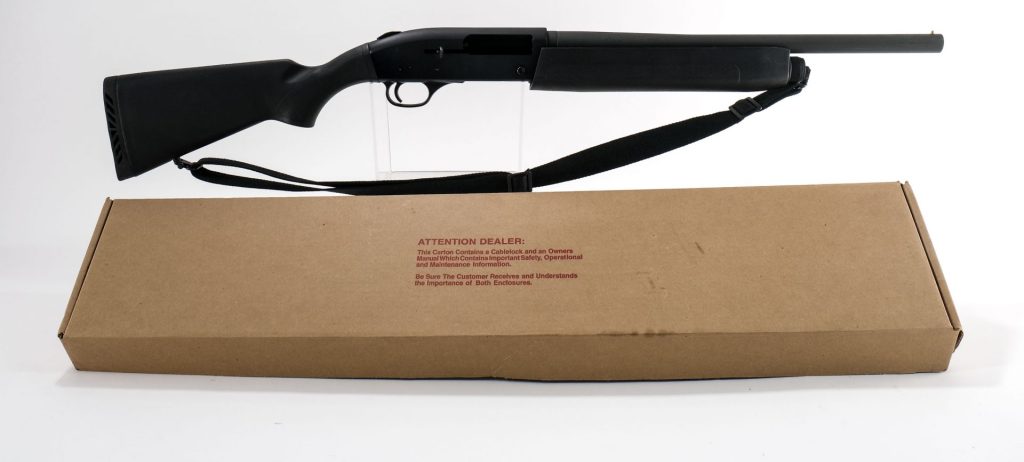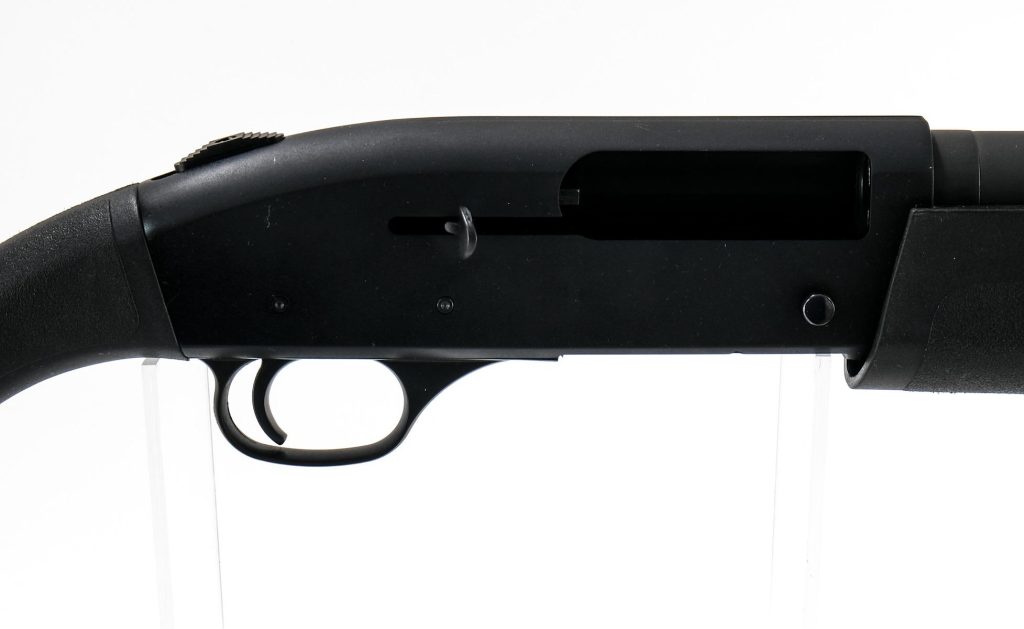
I’m a shotgun nerd through and through. I think that’s well-established. Recently I was doing some research on the Benelli M4, specifically, the 1999 competition the Marine Corps led that ended with it becoming the M1014 Joint Service Shotgun. I wanted to know who the competitors were and eventually found one. Mossberg entered the contest with the Mossberg M9200A1. The gun is affectionately called the Jungle Gun by shotgun nerds. However, Jungle Gun refers to the folding stock variant.
Enter the 9200
The Mossberg 9200 had been built as a sporting shotgun in the early 90s. Mossberg went with a gas-operated system, and the gun was built in various configurations. This includes slug guns, bird guns, and general hunting shotguns. Mossberg did produce a Persuader model with an 18.5-inch barrel, a parkerized finish, and synthetic furniture. However, the M9200A1 is not a Persuader.

This was a purpose-built shotgun designed for the Joint Service Shotgun contest. It retained many of the features of the M9200 and Mossberg shotguns but also had a number of small variations. Like most Mossberg shotguns, the gun had a tang safety, interchangeable barrels, and was even compatible with some Mossberg 5500 furniture.
The Big, Bad M9200A1
The M9200A1 passed the rigorous tests imparted by the United States military and was built to the specs required by the bid. It didn’t win ultimately, but it was mostly a well-built, easy-handling shotgun. This wasn’t Mossberg’s first semi-auto shotgun, but it was seemingly the first they entered military trials with.
The M9200A1 utilized a big thick barrel, a design similar to what we see on the Mossberg 590A1. Thick barrels are like thick thighs. They save lives. In a military context, it prevents the barrel from bending or becoming damaged when it faces the rough and tumble world of Lance Corporal Schmuckatelli.

Mossberg also replaced a number of aluminum parts with steel parts, like the safety and trigger guard. The gun featured a Parkerized finish to top it all off. The sights were nothing more than a bead, and the gun had an 18.5-inch barrel. The magazine topped out at a mere four rounds, not quite the combat load we are used to. Choate-made magazine extensions to top it off.
Oddly enough, while the M9200 model had a 3-inch chamber, the M9200A1 only had a 2.75-inch chamber.
The Fatal Flaw
The M9200A1 and 9200, in general, are considered reliable semi-auto shotguns. These days they might have issues with the reduced recoil tactical loads we all know and love but with standard ammo, it wasn’t a problem. The guns ran fine and cycled quite quickly. The problem really came down to the manual of arms to reload the gun.

It was unnecessarily complicated. The bolt release had to be held down for every round loaded. Not just held down, but pressed, released, and pressed again, and finally pressed a last time after the shooter finished loading. Semi-auto shotguns weren’t new, and why Mossberg thought this was a good idea is beyond me.
Doing this in a firefight isn’t easy, and four rounds isn’t a lot between reloads. Also, you can’t really top the gun off. To load it, you have to flip it upside down and just hold it there. It’s much like the SPAS-12, which is its own piece of work.
The M9200A1 – Out of Service
Mossberg offered the gun to the civilian and law enforcement market, but it didn’t see much success. The Jungle Gun version wore a side folding stock and gained the name from its supposed use with the DEA in Latin American jungles. Beyond that, the gun wasn’t very popular, but I can’t help but want one.



